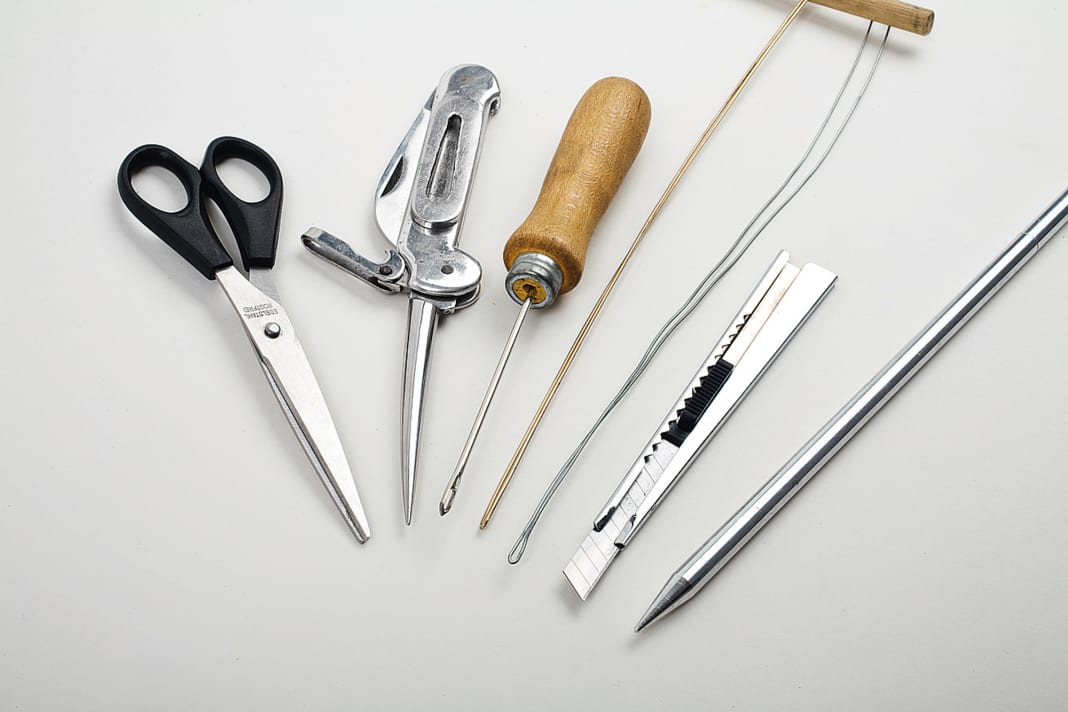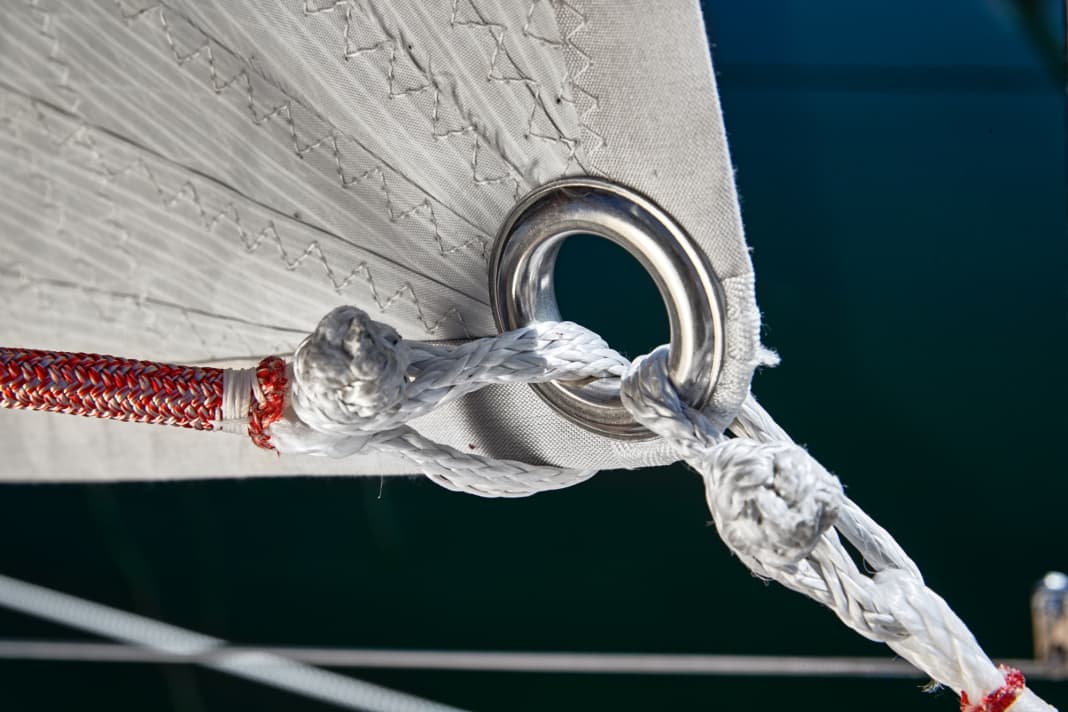





Go directly to the step-by-step instructions:
The idea is anything but new; easy-to-open connections made from cordage already existed in the days of commercial sailing. Spliced from beaten natural fibre ropes, they could be made quickly and used in many places. However, their breaking load and durability were low, which is why metal shackles ultimately prevailed. With today's high-strength Dyneema braids as the base material, however, things look very different. Cordage shackles are ideal for making connections that are far superior to the usual stainless steel shackles.
The function of a rope shackle
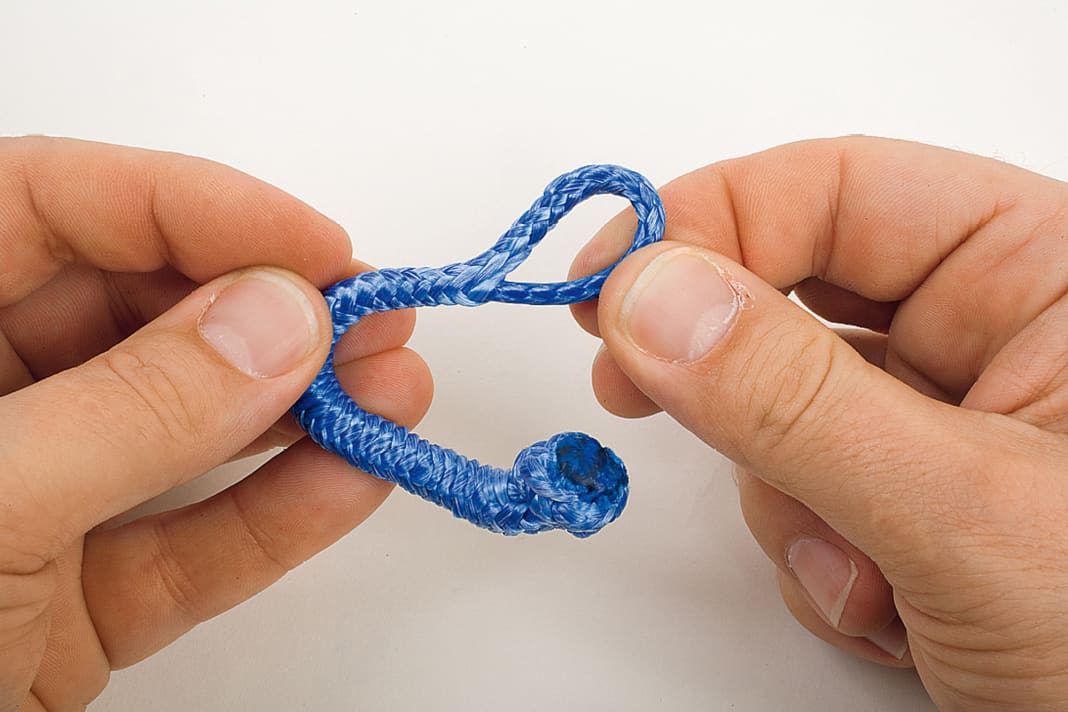




The advantages of rope shackles
Both in terms of weight and breaking load. Thanks to the enormous strength of Dyneema fibres, a rope shackle weighs only a tenth of a comparably strong metal connector. And you hardly need to worry about the durability of a Dyneema soft shackle either. The fibre is very UV-resistant and can withstand sunlight for several years even without a protective coating. Stainless steel only has an advantage when it comes to abrasion resistance. Sharp edges should therefore be broken or the rope shackle should at least be fitted with a protective cover.
In addition to their low weight and high strength, rope shackles are characterised above all by their ease of use in everyday life on board. As the soft shackle contracts more and more under load, it closes securely and does not come loose by itself even when the sails are flapping. However, when released, the rope shackles can be pulled open with bare fingers at any time, and in an emergency, the connection can even be separated at lightning speed under load with the on-board knife. Replacements are inexpensive and easy to make yourself.
In addition, the low weight and soft, flexible design of the soft shackles prevent injuries or damage to the rig. Scratches caused by shackles falling or sliding across the deck are a thing of the past, which is why rope shackles are also very popular on wooden yachts. The material is also completely resistant to corrosion. Joining aluminium and stainless steel is no problem.
Use of rope shackles
The possible uses of rope shackles are as varied as their advantages. In addition to the classic functions such as attaching sheets, halyards or blocks, there are a number of unconventional applications. For example, cordage shackles can be used as a mobile cleat on the foot rail. In contrast to a metal shackle, the anodising is not damaged and there is no squeaking or rattling noise. If the area of the shackle that passes through the railing is fitted with additional abrasion protection, the luffing cleat will hold even in rough harbours.
An even more unusual application are the stay riders made from shackles modified with webbing, which are even available for professional use. Here too, the low weight is decisive. What's more, the textile stays cannot cause any damage to the deck or the sail load, even when handled roughly.
Once you have got used to the unusually high durability of the soft rope shackles compared to their weight, you will constantly come up with new ideas for their use. It is a great advantage that you can make any size yourself using simple means.
What the rope shackles are made of
Simple Dyneema braid without a cover is best suited. It is offered by many cordage manufacturers. These lines are usually impregnated with polyurethane, which ensures that the individual fibres stick together well. This simplifies the splicing process and increases the durability of the finished soft shackle because individual fibres cannot get caught anywhere.
When choosing the required diameter, it helps to look at the specification of the rope. A 4 millimetre thick Dyneema rope usually has a breaking load of around 1,200 decanewtons, which corresponds to around 1.2 tonnes. The breaking load of shackles spliced from this is in the range of 0.8 to 1.5 times the cordage specification, i.e. around one tonne. A cordage shackle made from 6 millimetre thick rope already has a breaking load of around 2.2 tonnes and should therefore be sufficient for most applications on board a 35-foot cruising yacht.
In this context, however, one of the few disadvantages of rope shackles should also be mentioned. While the temporary overloading of a metal connector can be recognised by a stiff bolt or deformation of the shackle body, the Dyneema version lasts practically until abrupt failure without any noticeable change. For this reason, the next larger version should always be selected for the rope shackle. For weight reasons, the dimensions are irrelevant anyway, and a 5-point shackle instead of a 4-point shackle also looks elegant.
Which versions are commonly used for rope shackles
The classic rope shackle
In principle, there are various ways to splice a rope shackle. However, two variants have become established. One is the classic swap shackle. Here, the necessary eye is created by pulling the rope back into itself. These shackles are quick to splice and very compact. However, without an additional drawstring, they can sometimes only be opened again with very sharp fingers after a heavy load.
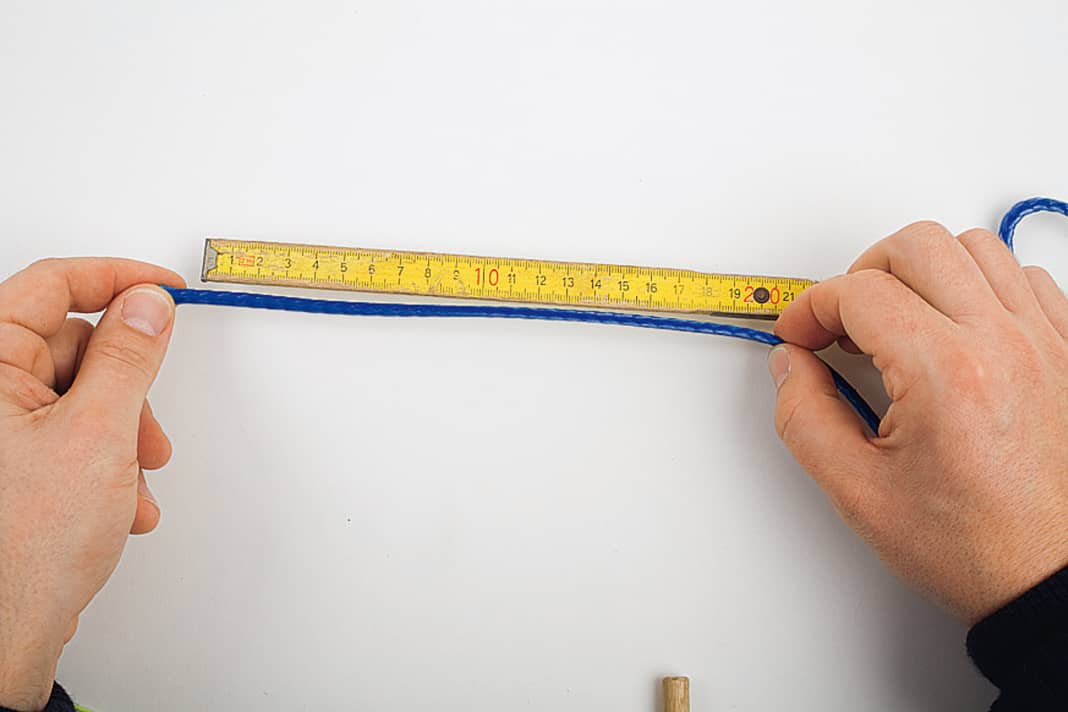





The rope shackle with 2 parts
In the second variant, the cordage is not tucked into itself, but simply threaded together several times. As a result, the shackle consists of two parallel sections and is very flexible. The sections can also be gripped separately for opening and the shackle can simply be slid open.
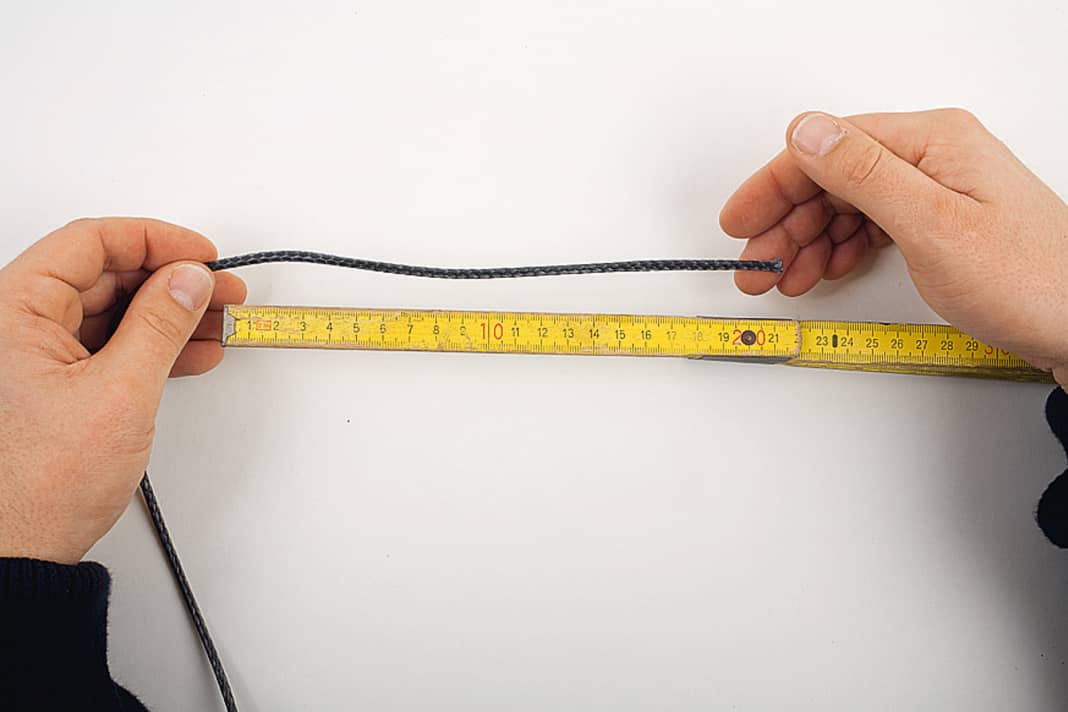





Diamond knot as a finish
A diamond knot forms the end of both shackles; the two-strand diamond knot has proven to be the best in practice. It is also easy to tie, as it only consists of a rope section in which the loose ropes are passed around the knot and then up through the centre.
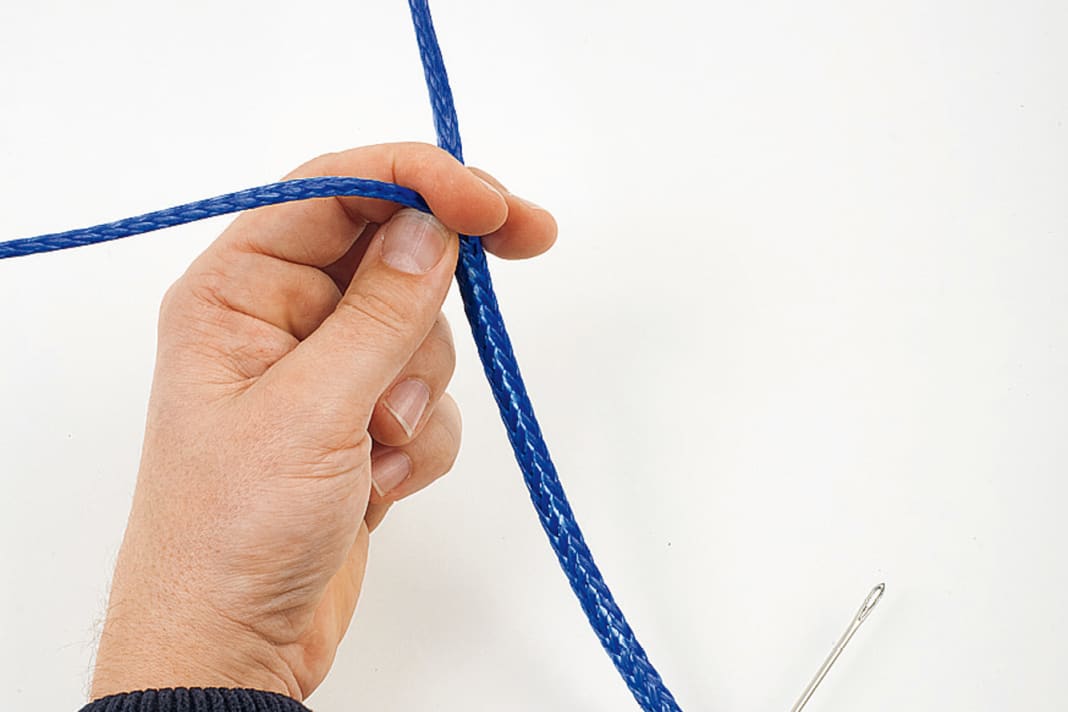





Manufacture of a shackle opener
A small drawstring made of one millimetre thick mesh facilitates operation.
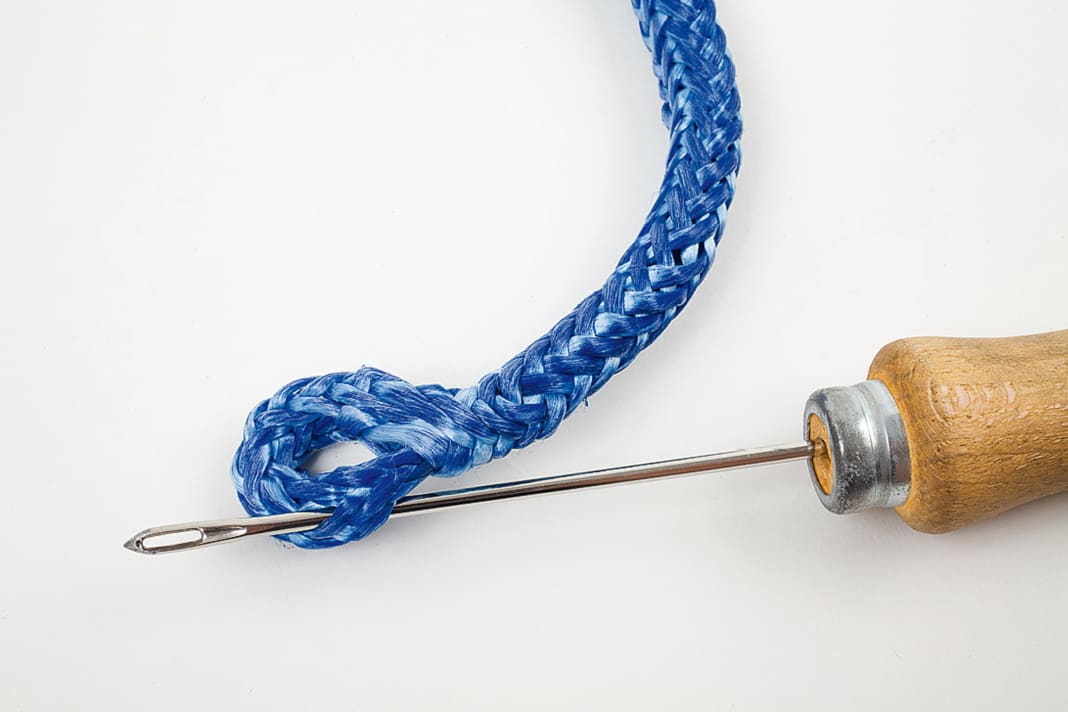




Application of a scuff guard
The rope shackle becomes even more robust with a section of braided cover.
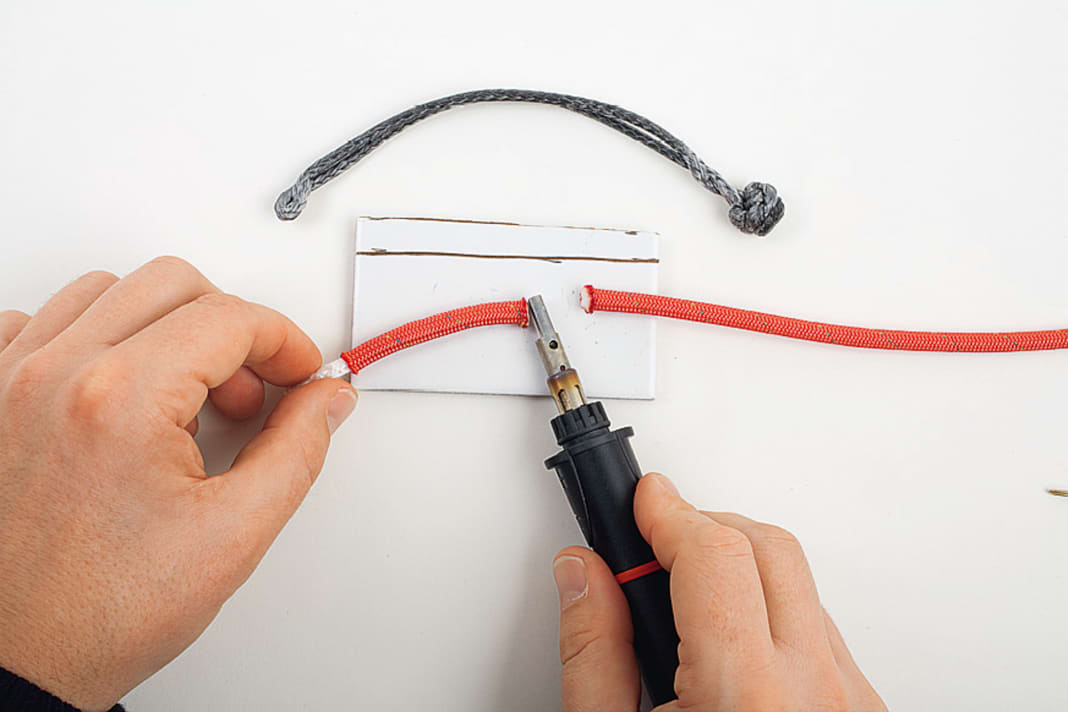




Tool tips for the rope shackle
No matter which type you choose, with a little practice you can make both shackles in just a few minutes. Single braids are extremely easy to work with; you don't even need any special tools, just a sharp pair of scissors or a knife, a lighter and a simple splicing awl.
A whole range of models from the rigging supplies can be used for the awl. However, a wire construction like the one we used is also sufficient. A 1.0 to 1.5 millimetre thick wire is bent together in a U-shape. A G guitar string, for example, is a good choice as it is also rustproof.
If you want a particularly luxurious finish, thread a drilled round timber onto the wire as a pull handle, which is attached to the wire with the inside of a luster terminal. A mobile gas soldering iron provides good service when working with synthetic fibre lines. Various attachments can be mounted on these torches, which look like a very thick biros, so that hot air, various soldering tips and a hot cutter are available in addition to an open flame.
